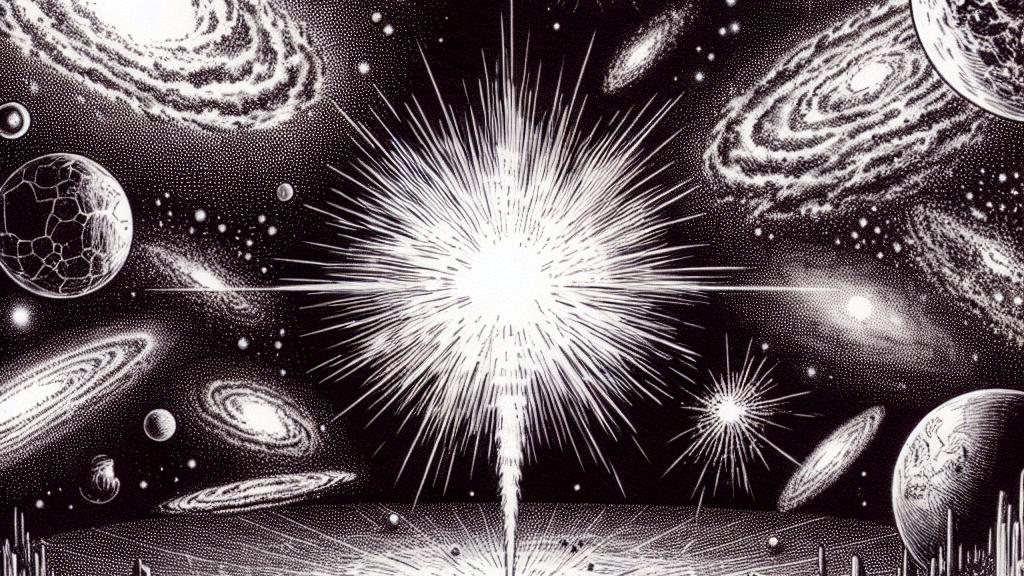Understanding the Secrets of Fast Radio Bursts
Overview
- Fast radio bursts (FRBs) are explosive cosmic events that illuminate the night sky.
- Recent breakthroughs link FRBs to neutron stars, shedding light on their mysterious origins.
- These bursts emit energy equal to three days' worth of sunlight in just milliseconds!

What Are Fast Radio Bursts?
Fast radio bursts, or FRBs, are some of the most magical and puzzling occurrences in the universe. Imagine a dazzling firework—brighter than entire galaxies—flashing across the cosmic dance floor, only to vanish in the blink of an eye! Discovered in 2007, these rapid explosions can release energy that rivals the output of our Sun in a fraction of a second. For instance, it's been estimated that each FRB emits as much energy as the Sun generates over three days, but all of this happens in just milliseconds. Just think about it: one moment, there's nothing, and the next—boom!—a flash of energy that dazzles and disappears, leaving scientists racing to unravel its secrets.
Revealing Their Origins: The Journey of Discovery
In an exciting breakthrough, astronomers at the Massachusetts Institute of Technology (MIT) have made significant strides in determining where these enigmatic FRBs originate. They zoomed in on a particular burst identified as FRB 20221022A, which hails from a galaxy approximately 200 million light-years away. By employing innovative techniques to analyze how the burst's brightness fluctuates—much like how distant stars twinkle—they determined that the FRB likely emerged from unusually close proximity to a rotating neutron star, only about 10,000 kilometers away! To provide some perspective, that's less than the distance separating New York and Singapore! This groundbreaking discovery not only confirms that FRBs can spawn near neutron stars but also suggests that future studies using scintillation could help us uncover additional bursts hidden across the cosmos, creating limitless opportunities for exploration.
Neutron Stars and Magnetars: The Inner Workings of FRBs
At the heart of this cosmic puzzle are neutron stars, particularly a special class known as magnetars. These stellar giants possess magnetic fields so powerful that they can obliterate atoms nearby—it's like a cosmic vacuum cleaner! Recent research indicates that the twisting magnetic energies from these neutron stars can unleash bursts of radio waves into the universe. This means that the incredible energy we see as FRBs might be the result of magnetic interactions surrounding these dense cosmic bodies. Just imagine: the energy swirling around these stellar remnants is capable of creating radio waves that traverse billions of light-years, lighting up our skies from unimaginable distances. It's like a cosmic lighthouse guiding us through the darkness of space!
Why FRBs Matter: Unlocking the Mysteries of the Universe
The increasing detection of FRBs provides a crucial key to understanding the universe's grand tapestry. Each FRB acts like a messenger from distant realms, conveying vital information about the cosmic environments they traverse. For example, by analyzing the way these radio waves interact with interstellar gases, scientists can begin to piece together the structures and conditions of far-off galaxies. In fact, estimates suggest that up to 10,000 FRBs could happen daily, each bursting with unique clues about the mysteries of our cosmos. Picture this ongoing exploration: as technology advances, our capacity to detect and interpret more FRBs will unveil a treasure trove of secrets, enriching our understanding of cosmic formation, evolution, and perhaps even the fate of the universe itself. The future of astrophysics gleams bright with the light of these remarkable fast radio bursts!

Loading...